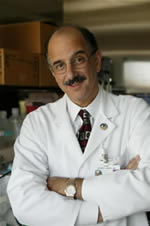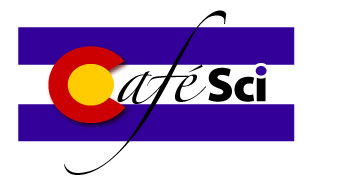|
Dr. Edward N. Janoff is the Tim Gill Professor of Infectious Disease in the Department of Medicine at the University of Colorado Denver School of Medicine. He recently stepped down as head of the Division to devote more time to the Mucosal and Vaccine Research Program Colorado (MAVRC). Dr. Janoff received his Infectious Disease training at the University of Colorado and training in immunology at the National Institutes of Health. His work has focused on diseases of international importance, such as diarrheal disease, respiratory infections, and HIV-1/AIDS. Specifically, he has addressed the role of humoral immunity in defense against Giardia lamblia and Vibrio cholerae in the U.S., Thailand and Peru. Currently, Dr. Janoff and his team are characterizing mucosal responses to Streptococcus pneumoniae in the lung and to HIV-1 in the intestine, reproductive tract, and in breast milk. Each study is supported by a field site in Africa (Uganda, Burkina Faso, Botswana and South Africa) with collaborators from these African nations, England, France, and the United States. The goal of Dr. Janoff's laboratory is to provide a scientific foundation for mucosal vaccines to prevent pneumococcal infections and transmission of HIV-l /AIDS. Dr. Janoff laboratory focuses on the development of mucosal immunity to provide primary protection against infection, particularly HIV and Streptococcus pneumoniae. He integrates clinical and basic laboratory approaches to determine how pathogens interact with the host at the mucosal surface and how innate and humoral mechanisms, individually and in concert, serve to protect against infection. His primary model for mucosal defense against HIV involves post-natal transmission of the virus by breast milk. Based on epidemiologic, clinical and virologic and immunologic data from women in Burkina Faso, Botswana and Uganda, he is characterizing the role of pathogen-specific antibodies in blood and milk from transmitters and non-transmitters to neutralize autologous and heterologous HIV isolates, to prevent binding and uptake of these viruses by epithelial cells, as well as the mechanism of such inhibition. This work involves cellular, molecular, and biochemical approaches. For S. pneumoniae, he characterizes the systemic and mucosal response to natural infection and vaccine, the molecular basis for capsule-specific antibody responses (VH gene diversity and mutational pattern), and the functional activity of these human antibodies. The model involves the interaction of the bacteria with and without specific virulence factors (e.g., pneumolysin, IgA1 protease), complement, cytokines and chemokines, epithelial cells and phagocytes (neutrophils and alveolar macrophages). The goal is to develop effective vaccines against these pathogens to prevent infections where they begin, at the mucosa. |
 |
|
Prevention of Infectious Diseases: Vaccines and Immunity "Immunity" means "exemption," protection against the destructive effects of infections. In the last 100 years, our lifespan in the U.S. had doubled due in large part to improved sanitation and control of infectious diseases, particularly with vaccines. Deaths that were once common from polio, diphtheria, measles, smallpox have now largely disappeared, prevented by immunization. The memory of the danger and death from these diseases has largely faded. Now immunization is routine for most children and many adults, but questions arise in our healthy communities about vaccine safety and efficacy. Do we get immunized to protect ourselves or to protect the community, or both? Are the risks from vaccines worse than the risks of the diseases they prevent? Since many of these diseases are so uncommon now, do we still need vaccines? What new vaccines are available (such as to prevent shingles and cervical cancer) and what vaccine would we like to see soon (such as to prevent HIV/AIDS, TB, malaria or West Nile Virus)? Bring your perspective from the past and about the future and we'll talk. |
